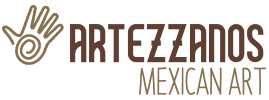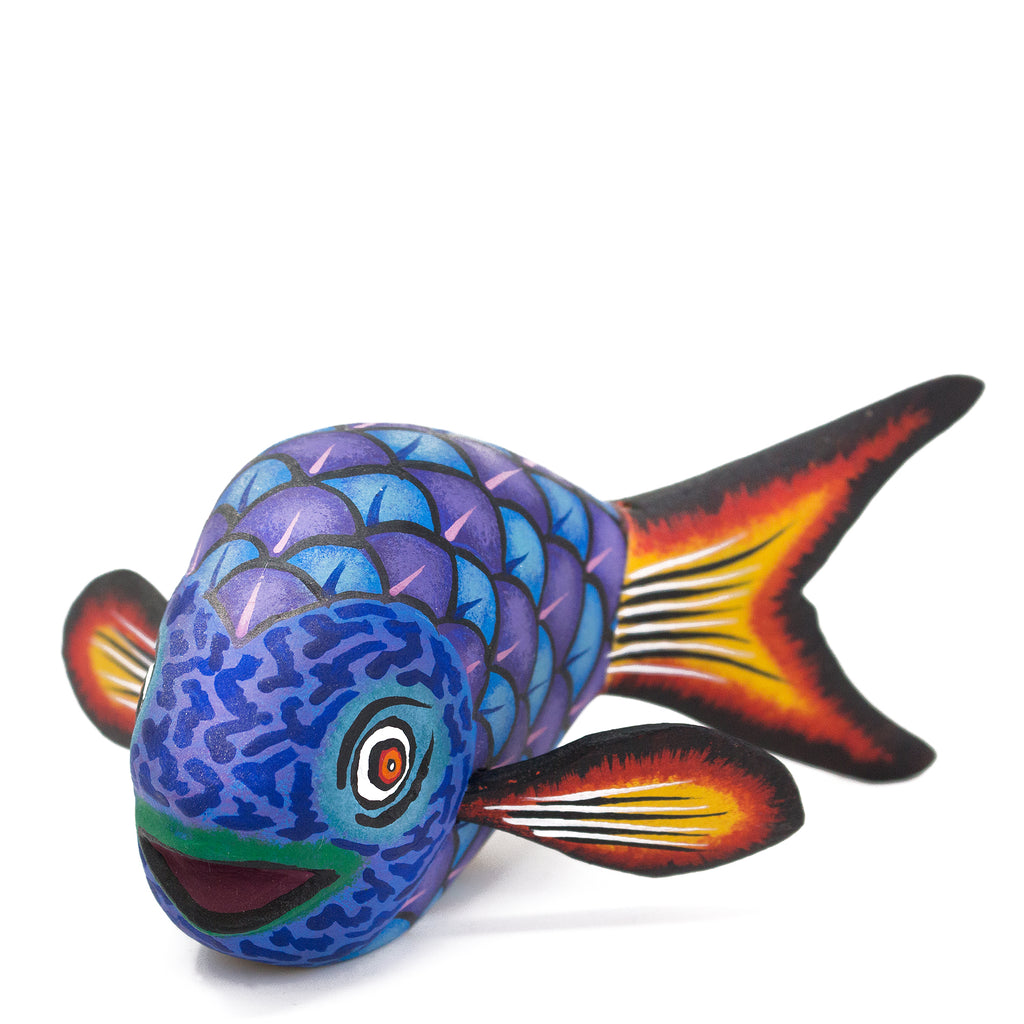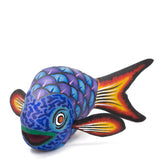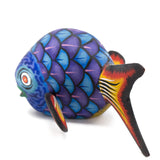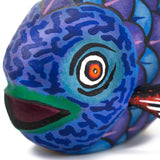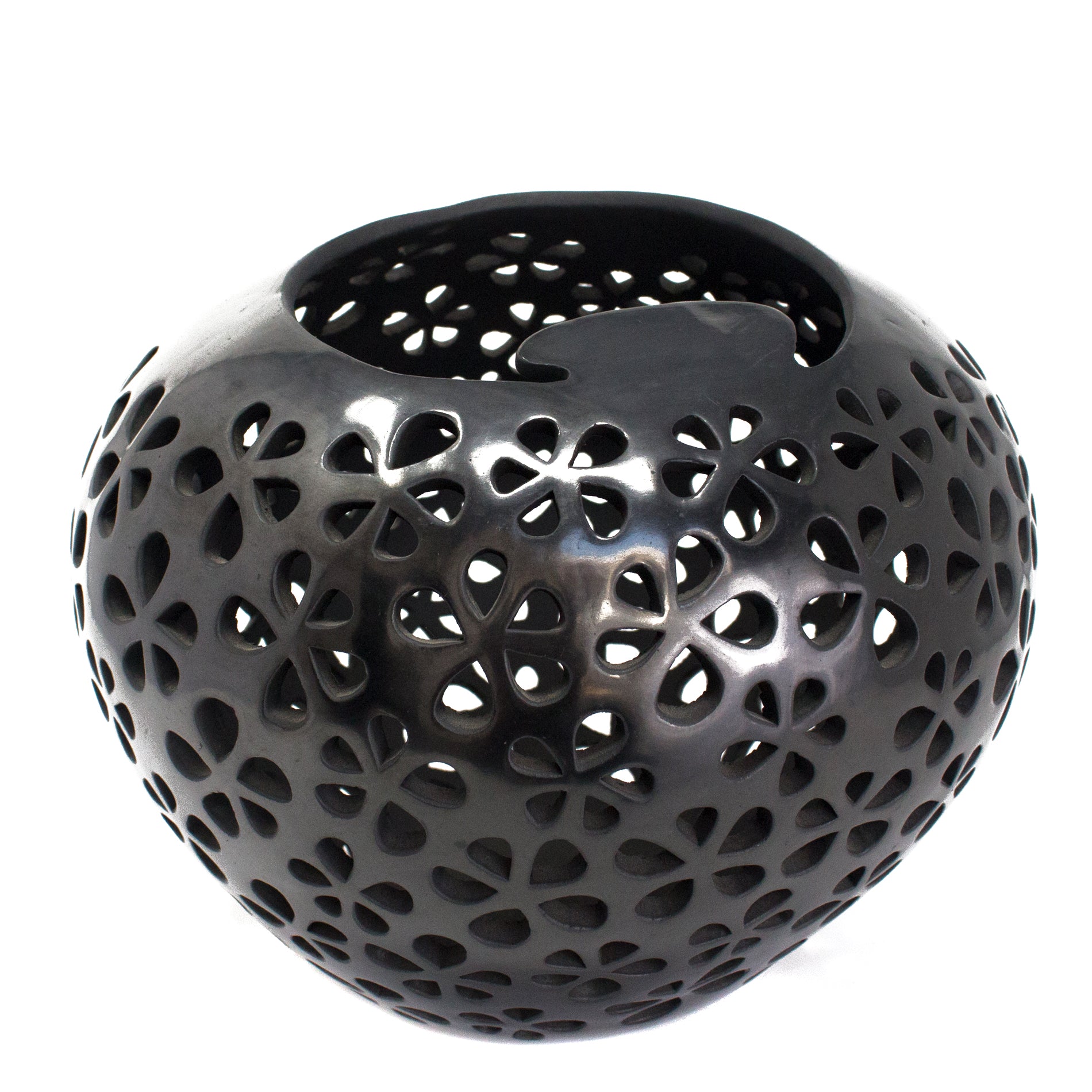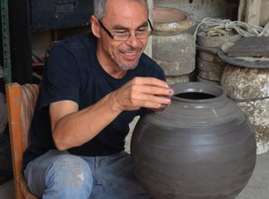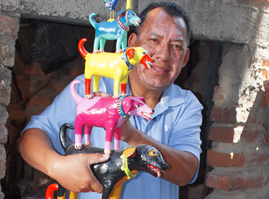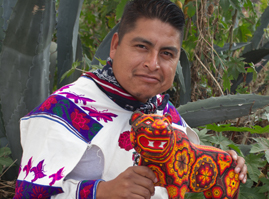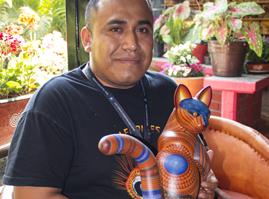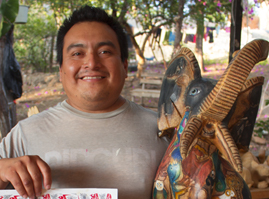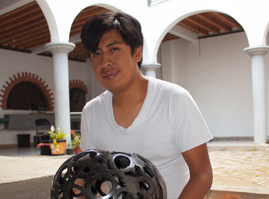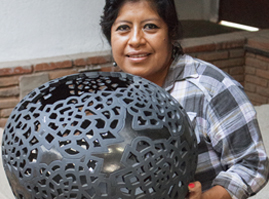With its beautiful color palette, this fish Alebrije is a perfectly colorful match for any area in the need for a color accent, while filling it with inspiration all at once! Hand-sculpted from Copal Wood and hand-painted with stunning detail by Master Artisan Eleazar Morales, these Alebrijes are unique pieces that no collector can miss.
Details:
This piece is currently not in stock. Once your order is processed, the artisan will receive an order to produce a replica of the item you ordered. Given the handcrafted and artistic nature of their pieces, your purchase may have some variation in color and shape. It is these same variations that make every item unique.
Elaboration times range from 20-35 days.
Measurements:
2.76" high x 5.12" wide x 5.12" long
Weight:
0.15 lbs
Visiting Oaxaca is like entering the magical world of Alebrijes, which more than being a craft, are widely considered to be true pieces of art. The knowledge required for the elaboration of these intricate wood sculptures is passed from one generation to the other. People in San Martin Tilcajete and Arrazola, Oaxaca, are born and raised deeply connected to the creation of these figures, all as a part of their own family environment. Usually, the locals live surrounded by copal logs, tools and paints inside their houses, as well as the traditional process of carving the sculptures. This is how children and young members of families learn day by day this craft from their elders.
The Process.
It all starts with the selection of the wooden piece to be used, the figure to be sculpted is decided according to the log’s shape, the base of the log is cut out with a Machete, and then the artisan starts searching for the balance of the figure’s shape and weight, to decide whether the figure will stand vertically or horizontally.
The artisan then makes drawings on the sides, giving him reference on where he will make rough cuts with his machete, he then proceeds to cut out details with smaller knives, which contribute to the sculpture by giving it expression and movement, each piece is unique, they can be reproduced, but there will always be subtle differences because of the 100% manual process, based on the original log’s shape and the hand-carving and sanding.
The carved piece is left to dry in the sunlight, once its outer body has dried, it is carefully sanded, the sawdust is kept in case of the need of repairs. After the sanding, the piece is again left to dry under the sun. In some cases, a large piece can take up to two years to dry out entirely.
Once the piece has completely dried, it is then taken through the repair process, using a variety of tools, artisans open the cracks in the wood and are then filled with copal wedges and a mix of the previously collected sawdust mixed with sealant. The wedges are then sanded, and smoothed. These processes can take up to a month on larger pieces.
After sanding and smoothing the sculpture, artisans apply a base color coating, it could either be a solid tone or in some other cases even gradients, after applying this first paint bath, artisans usually let the piece rest, they wait and see if there are any cracks on the wood for them to amend.
The artisans proceed to decorate the pieces with different brush types, each artisan has a style of their own for decorating, from the simplest traces to the most intricate designs and prehispanic patterns. After decorating the piece, it is covered with a lacquer spray to protect it.
In the past, artisans were only producing animal figures, but this started changing when younger artisans started introducing new subjects that contributed to alebrijes as a diverse art form.
Suddenly, you could also find dragons, monsters, and even aliens! From this moment on, the artisan’s creative potential had become free to explore and create, which consumers and collectors all started appreciating and searching for.
Some of the figures or themes of the sculpts became very popular and started being repeated, some such as dogs, armadillos or iguanas, but these figures not only represent the local wildlife, they are also common symbols of local folklore.
Since the 80s, artisans started exploring different figures, such as giraffes, dogs, cats, elephants, zebras, deer, and even some more exotic types, like dolphins, sharks and other fish. All of this exploration is what set the stage for a second wave of exploration from younger artisans that gave (way to) fantastic figures such as dragons and aliens.

Eleazar Morales
Eleazar was born in Oaxaca, Mexico, and he started crafting alebrijes when he was 14 years old. Since he wasn't born into an artisan family, Eleazar taught himself, and learned the needed techniques by observing other artisans. He recalls the first piece he carved, it was a pelican, a figure that allowed him to experiment with the groundworks of balance and dinamism, mostly because it was hard for him to set the piece in a posture that allowed it to stay still.
Eleazar's pieces are distinguished by the use of a more realistic decoration, depicting hair, scales or feathers depending on the animal type, as well as the use of matte tones. Eleazar also creates animal families, with hypopotamus, ocelots, birds, and other creatures.
Nowadays he lives in Arrazola Xocotlan, Oaxaca, his house is one of the last houses in town and access to his property is quite complicated, that’s when he decided to rent a space at the entrance of the town, that's where he works and sells his pieces. His alebrijes have been included in books and catalogues, he has even produced a 1.5m long alebrije of an airplane that is displayed at the Bakersfield Airport in California.
Eleazar enjoys his job day by day, and he wishes that whoever acquires his pieces may feel the joy of his work.
With 28 years of experience, Eleazar sustains his family from his arts, and feels proud that he stuck to this type of art, and want his work to be known in more places.
